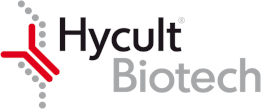Reactivity
N/A
Applications
Frozen sections, Immuno assays, Paraffin sections
Description
The polyclonal antibody recognizes 3-chlorotyrosine specific protein adducts that are formed by hypochlorous acid. Polymorphonuclear leukocytes or neutrophils are one of the primary defense mechanisms against invading microorganisms and also involved in the removal of necrotic cells. However, in certain conditions, recruitment of neutrophils may aggravate existing injury. For example, neutrophils are involved in the pathophysiology of hepatic ischemia-reperfusion injury, endotoxin- and sepsis-induced liver failure, alcoholic hepatitis, and certain drug toxicities. The fact that neutrophils accumulate in the liver does not necessarily mean that they cause injury. ICAM-1 and CD18 integrins are involved in the adherence of neutrophils to target cells, e.g., hepatocytes. This results in a long-lasting adherence-dependent oxidant stress, which is a major factor in neutrophil-mediated liver cell killing. Stimulated neutrophils release oxidants, proteases, and other potentially injurious constituents. They generate superoxide radicals and hydrogen peroxide and release MPO, which catalyzes oxidation of chloride by hydrogen peroxide to give hypochlorous acid. This hypochlorous acid can react with proteins to form 3-chlorotyrosine protein adducts. A limitation for investigating the pathophysiological role of neutrophils in vivo is the lack of a reliable biomarker for neutrophil cytotoxicity. Immunohistochemical staining of liver samples with anti 3-chlorotyrosine antibody correlates well with neutrophil-induced liver injury. The polyclonal antibody can be used to assess chlorotyrosine protein adduct formation and is a useful marker of neutrophil-induced liver cell injury in vivo.
ESCLUSIVAMENTE PER USO DI RICERCA (RUO) e non per uso terapeutico o diagnostico su uomini o animali. Il prodotto NON è un Dispositivo Medico o un Diagnostico in Vitro.
PRODUCT FOR RESEARCH USE ONLY (RUO) and not for therapeutic or diagnostic use on humans or animals. The product is NOT a Medical Device or an In-Vitro Diagnostic (IVD).





